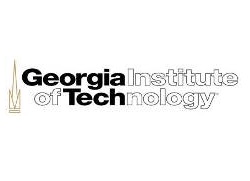Georgia Tech suggests pathways and actions for businesses using IoT for digital transformation

A new white paper has been published by Georgia Tech that offers food for thought and helpful comparison points regarding the Internet of Things (IoT) and Digital Business Transformation (DBT), rather than providing primary scientific research.

Michelle Mindala-Freeman
Some of the key conclusions are that DBT is first and foremost rooted in business (avoid the substantial risks of making it exclusively a technological endeavour), and that its models and tools augment traditional project management practices. The white paper goes on to recommend 4 courses of action for enterprises.
The white paper, initiated in 2018, has been developed by the Working Group on IoT Thought Leadership of the Georgia Tech Centre for the Development and Application of Internet of Things Technologies (CDAIT). The contributors to this article, i.e., Michelle Mindala-Freeman, Sébastien Lafon, and Alain Louchez, as well as the other white paper authors come from varying walks of industry and academia and are engaged in digital and IoT undertakings..
Digital Business Transformation is first and foremost rooted in business
DBT is a broad-based, long-term, dynamic process, which includes many moving parts. Internet of Things technologies as a whole constitute one of these critical foundational parts. There is a tightly coupled relationship between the two – the success of IoT programmes rests on the same foundation and success factors as digital business transformation, and digital transformation’s success for many enterprises rests on delivering the transformative business value of IoT.

Sebastien Lafon
It therefore holds true that, regardless of the non-trivial technological dimensions of IoT – such as those in play today (like artificial intelligence, cloud/edge computing; communications protocols (from low power to 5G) or miniaturised sensing and actuating devices with increasing capabilities) or those farther out and less widely in play (like quantum computing, bio-transistors or advanced energy harvesting) – IoT programmes as part of digital business transformation are first and foremost undertakings firmly and deeply rooted in business.
Making it exclusively a technological endeavour not only misses the point, but is downright risky if not dangerous for the firm across multiple dimensions – not only technical; but also financial, operational, cultural, managerial – and even risks company brand and reputation.
Digital transformation models and tools augment traditional project management practices
The models and tools made available in the paper are devised to augment traditional project, delivery and management practices – they start and finish by looking at the whole and addressing both the ‘why’ (i.e., why are we doing this? why should we continue?) and the ‘what’ (i.e., what is important? what must be addressed?).
- IoT projects must be defined, designed and delivered as part of a comprehensive DBT agenda and approach. The DIGIT (Discover-Identify-Govern-Implement-Track) framework outlined in the paper identifies the building blocks that are mission-critical to success, starting with setting and communicating a clear digital strategy.
- The IoT end-to-end value chain is rich and complex, going well beyond devices, networks and applications. To create a more holistic view, the paper proposes the IMAGE (Interface-Medium-Application-Glue-Extraction) model, which blends technological and non-technological aspects, all essential for delivering scale and benefits over time.
- IoT and business leaders should take action now to ground their DBT programmes in fast-emerging value vectors such as reuse, recycling, remanufacturing and other regenerative practices and processes, i.e., “Re-X”, (circular economy), outcome-driven business models (outcome economy), and integration (interconnected economy), i.e., the “new ROI”, which, if judiciously harnessed, will bolster corporate return on investment.

Alain Louchez
However highly complicated the technical dimension of IoT is, which, if anything, will become even more so and whose effective and efficient handling allows no shortcuts or vague approximations, the human dimension, albeit fuzzy and somewhat volatile, is much more complex and in need of leadership and management attention.
Companies contemplating launching digital transformation initiatives and/or initiatives powered by IoT would be well served to integrate early on these two strategic keystones: business (the end-game) and people (the engine), in their thinking.
Suggested courses of action
Success in digital transformation, and therefore IoT-driven digital programmes, will come to those who take the time to:
- Thoroughly understand the reasons that justify and support this undertaking;
- Acknowledge that it can only be achieved by, through and for their various stakeholders;
- Establish the proper programme framework, taking a holistic approach and setting reasonable objectives accordingly; and
- Recognise the broad enterprise impact and plan for ongoing digital evolution and change.
The views expressed in this article are solely the authors’ collective views and do not necessarily represent those of the Georgia Institute of Technology (Georgia Tech), the Georgia Tech Centre for the Development and Application of Internet of Things Technologies (CDAIT) company members, the individual members of the CDAIT IoT Thought Leadership Working Group, and the University System of Georgia or the State of Georgia.
Comment on this article below or via Twitter @IoTGN
